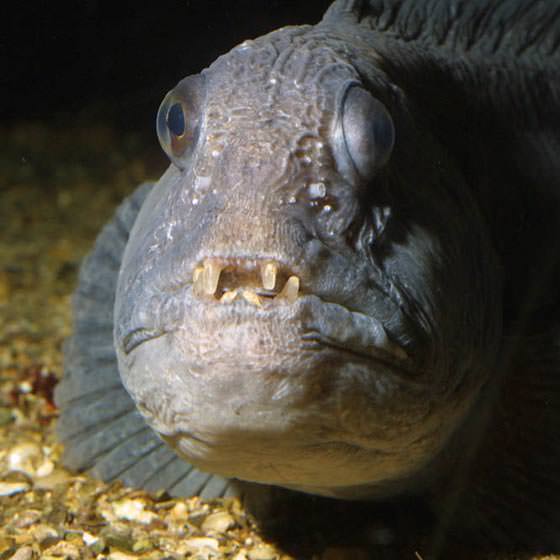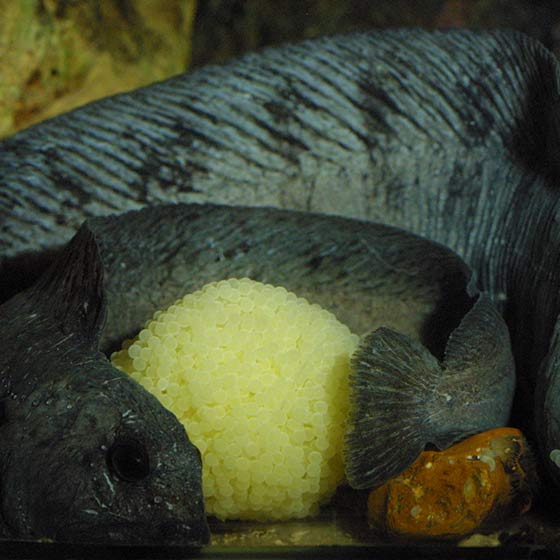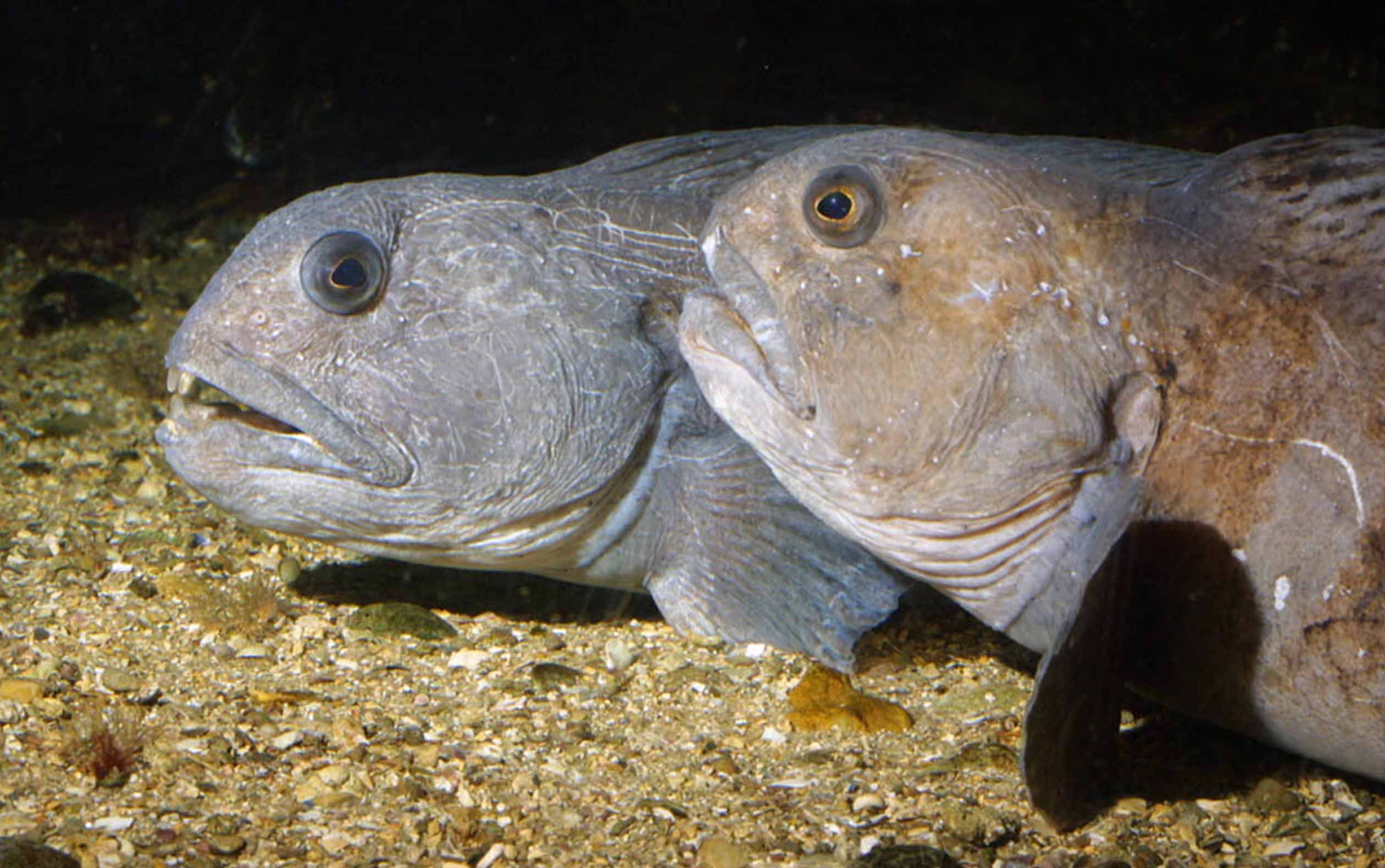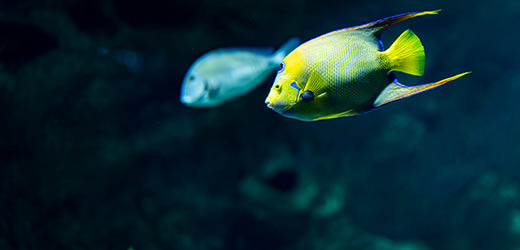Reproduction
The wolffish’s jaws are endowed with large canines that allow it to crush the molluscs, crustaceans and echinoderms (sea urchins and sea stars) that it eats.
After the mating season, the wolffish loses its teeth, growing new ones each year. The wolffish breeds in the fall, on seabeds 150 to 200 m deep. Unlike most fish, which release their reproductive cells directly into the water, wolffish must physically mate. Fertilization occurs inside the female and so is referred to as ‘internal’.
The female lays 8,000 to 30,000 eggs measuring 5 cm in diameter, in a bulky, compact ball. The male defends and ventilates the clutch. When they hatch, the larvae are already fully formed, measuring up to 2.5 cm long. They live for a short time in the open water before dropping to the ocean floor to adopt an adult lifestyle. The Atlantic wolffish can reach sizes of up to 1.50 m.
Its meat is highly prized, leading to attempts at breeding conducted in Canada, Iceland and Norway.





